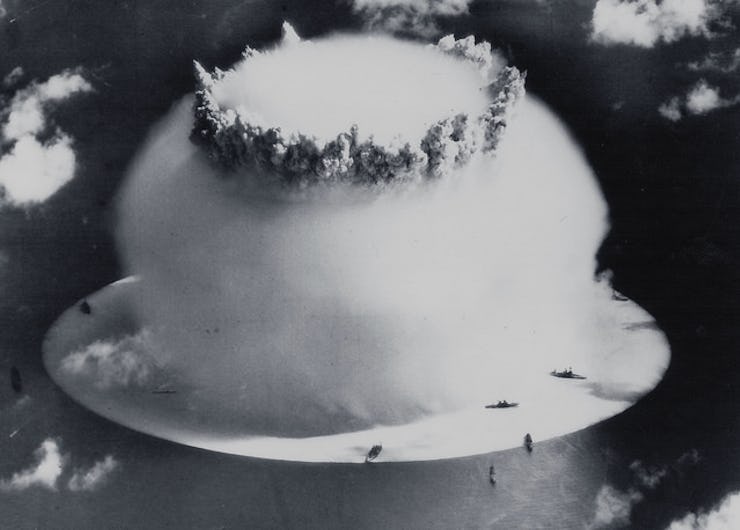The Japanese Almost Built Atomic Bombs During World War II
Newly discovered documents show how close the Axis power was to going nuclear.

A new trove of documents uncovered at Japan’s Kyoto University detail the efforts of the Japanese government to create an atomic bomb during World War II and illuminate that ultimate counterfactual: What if the Axis got the bomb?
Dated between October and November of 1944 and titled “Ultracentrifugal Separation,” the papers belonged to a researcher named Sakae Shimizu and chronicled the attempts of scientists at the precursor to Kyoto University to separate and enrich uranium-235, a key component to create the deadly blast brought on by nuclear fission.
Shimizu was a part of one of two concurrent programs commissioned by the Japanese government to develop the technology. One, known as the “Nigo Research,” was commissioned by the Imperial Japanese Army, while Shimizu’s program, called “F Research,” was commissioned by the Imperial Navy, and took place at what was known as the university’s Radioisotope Research Center during the war.
The fact that both of the main Axis powers were working to produce an atomic bomb during World War II has been known for decades, but actual information is scarce because American forces confiscated much of the research after the war.
Some contend the Japanese nuclear program wasn’t a serious threat, but these papers may hint otherwise. The Japanese were — it would seem — making real progress toward understanding nuclear weaponry. As to whether they could have fabricated a bomb or delivered the payload, that’s another matter. Japan’s non-Pearl Harbor attempts to bomb America were largely limited to atmospheric balloon programs that didn’t really work.
The documents themselves were discovered by Akira Masaike, a current professor who worked in the same research center as Shimizu.